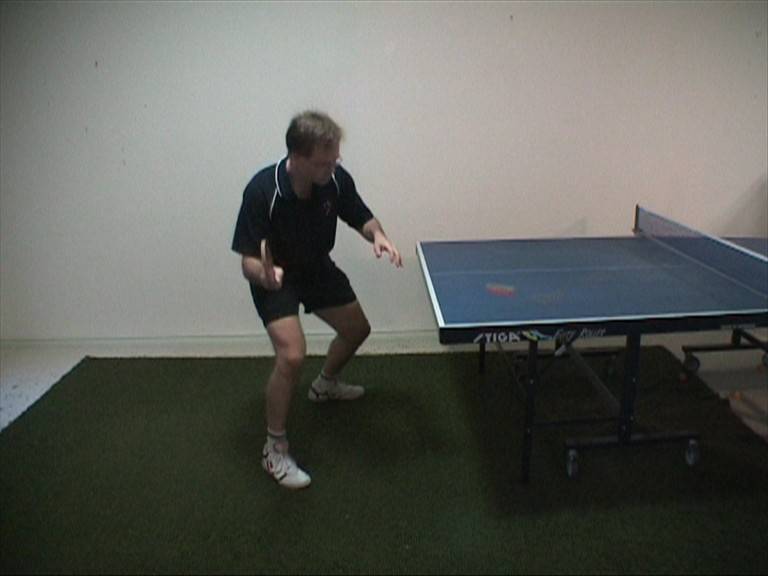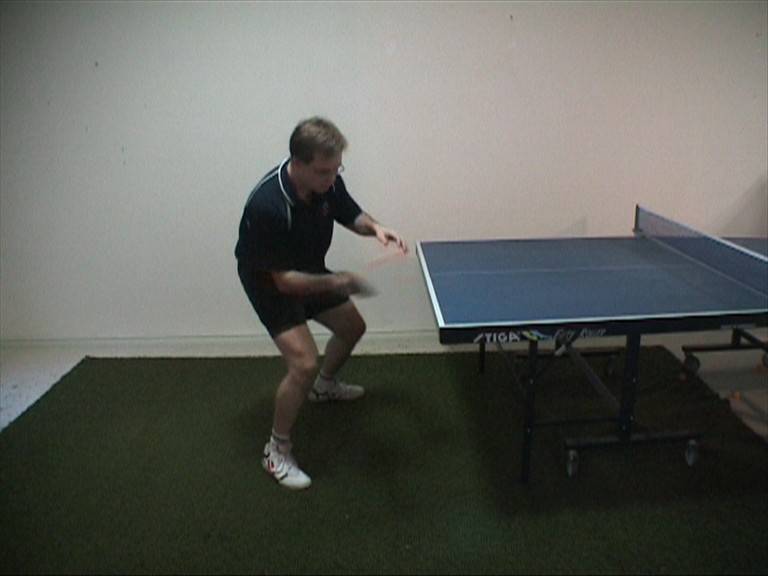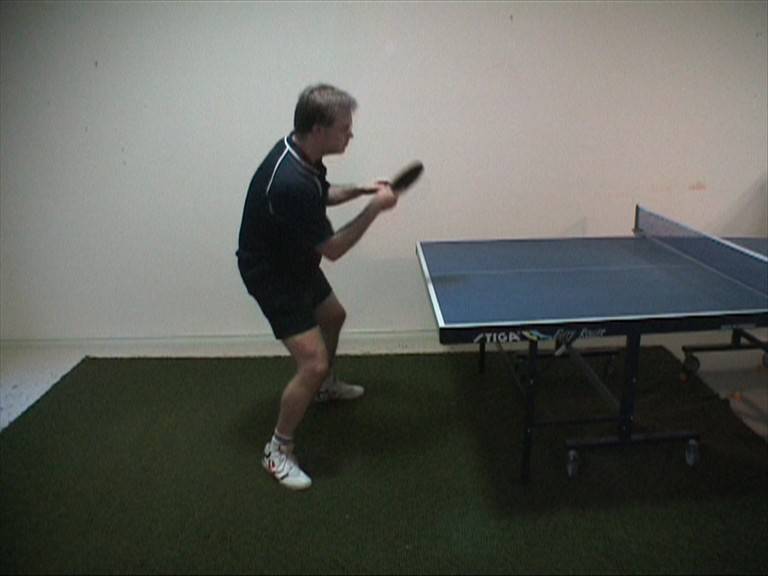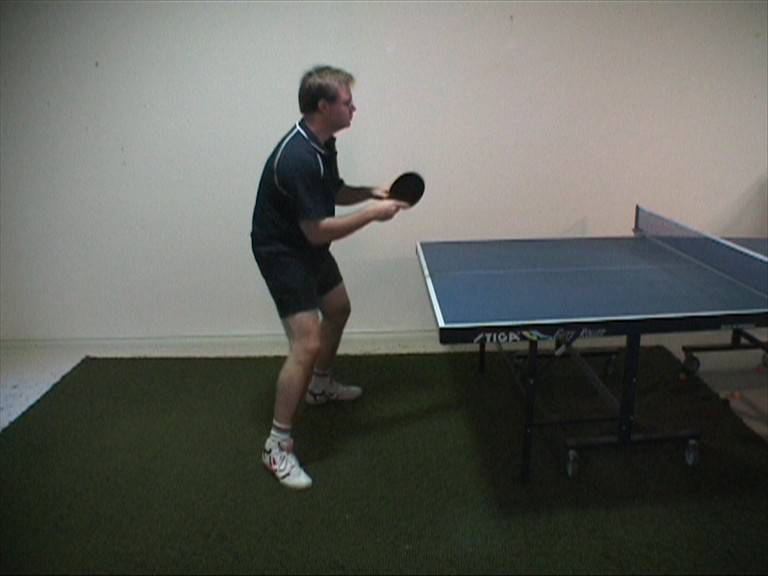Having discussed the backhand push, we will now be looking at what should probably be the fourth table tennis stroke that you learn – the forehand push. This stroke is the foundation of all forehand backspin strokes, so by learning how to hit it correctly, you will find it easier to learn the more advanced strokes such as the forehand chop, which is essential for advanced defensive play.
In the forehand push against light to medium backspin, the idea is to hit the ball over the net with slow to medium speed and a little backspin to help you control the ball, and make it difficult to attack.
Ready Position

© Greg Letts
Points to look for:
- The feet are placed with the right foot slightly further back than the left foot, which gives the best allround stance for any stroke.
- Most of the weight is on the balls of the feet to allow quicker movement. Too much weight on the heels will slow down movement, and too much weight on the toes will affect balance.
- The weight is evenly distributed between the left and right legs.
- The knees are bent and the feet are around one and a half times shoulder width apart. The torso is also leaning slightly forward. This gives a lower center of gravity for better balance, and allows for easy movement in all directions.
- Shoulders are in line with the legs, with the right shoulder slightly behind the left.
- The arms are held roughly shoulder width apart, with around a 90 degree angle at the elbow. The bat should be above the table to allow easy stroking of short balls.
Beginning Of Backswing

© Greg Letts
The ball is coming to the forehand side with backspin, and the decision has been made to play a forehand push. The backswing begins the stroke.
Points to look for:
- The hips, waist and shoulders have begun to turn to the right, although the head is still facing forward watching the ball. There will be a little weight transfer to the right leg, since the ball will be hit to the side of the body.
- The bat has only moved slightly backwards at this point. The amount that the bat moves backwards will vary from player to player, and will also be affected by the amount of power the stroke is hit with.
- The left arm is moved in synchronization with the right arm, to help improve balance while turning the body and shifting body weight.
End Of Backswing

© Greg Letts
The ball has just bounced on the table, and the backswing has finished.
Points to look for:
- The bodyweight has moved a little more onto the right leg.
- The left arm has continued to move in tandem with the right arm.
- Notice that the shoulders have turned more than the hips and waist.
- Both shoulders have lowered a little, as the player continues to get into position. The right hand is at a height that is a little above the expected maximum height of the bounce of the ball.
- The head has lowered to allow the player to keep watching the ball comfortably and closely.
- The player is not behind the ball, but is on the left side instead, to allow a comfortable swing from the forehand side.
- The angle of the bat is a little open, with the top edge of the bat pointing slightly upwards due to the slight cocking of the wrist.
Contact With The Ball

© Greg Letts
Contact has been made with the ball.
Points to look for:
- The player has watched the bat contact the ball.
- The hips, waist and shoulders have turned a little to the left.
- The forearm and bat are moving faster than the shoulders, as shown by the slight blurring in the photograph.
- If the ball was compared to a clockface, the bat has made contact at a point roughly around the number 8, while the bat was moving mainly forwards and slightly down. Note that the angle of the bat remains open, and has actually got slightly more open as the player adjusted the bat angle to get more spin and less speed.
- This movement makes the ball go mainly forward, with a light to medium amount of backspin generated by the brush of the ball.
- Contact has been made to the right side of the body.
End Of Follow Through

© Greg Letts
The follow-through has come to an end, and the ball is on its way.
Points to look for:
- The player is now watching his opponent at the other end of the court, rather than the flight of the ball.
- The hips, waist and shoulders turned back to the left.
- The hips, waist and shoulders are a little higher than the original ready position, since the legs have pushed up a little to help lift the ball.
- The follow-through has finished around shoulder height.
- The elbow is still bent, since the stroke is made without straightening of the elbow. It is a swing, not a jab or punch.
Return To Ready Position

© Greg Letts
The player returns to his ready position before the next stroke.
Points to look for:
- The player simply had to bring his right arm down and tilt the bat so the edge points up to have his bat back into the ready position. Note that the bat is pointing forward in a neutral position, and is not left in place for another forehand push.
- The waist, hips and shoulders have returned to their original position.
- His knees have begun to bend as he returns to his basic crouch position.
- His bodyweight is again evenly distributed between his left and right legs, and on the balls of his feet.

